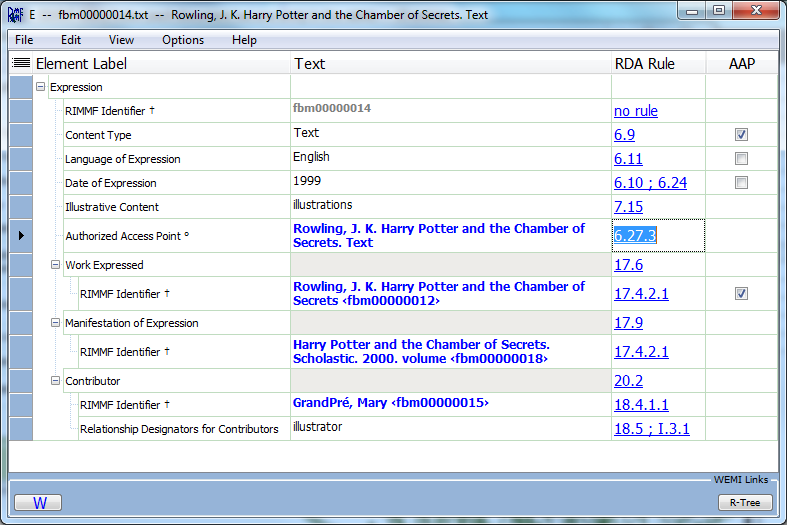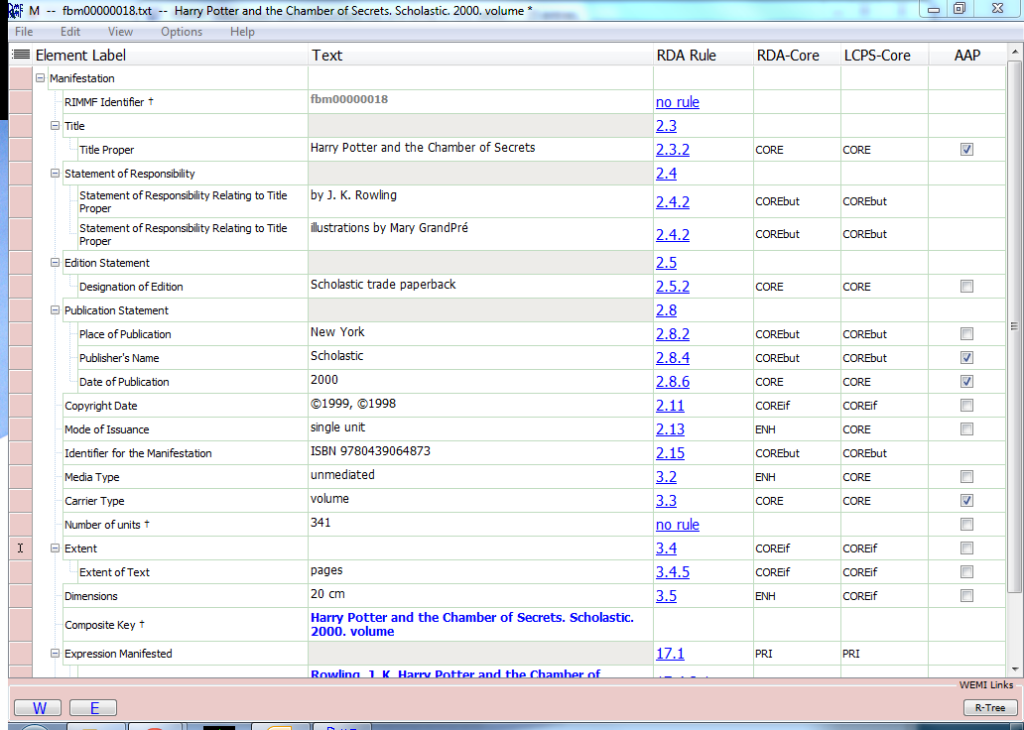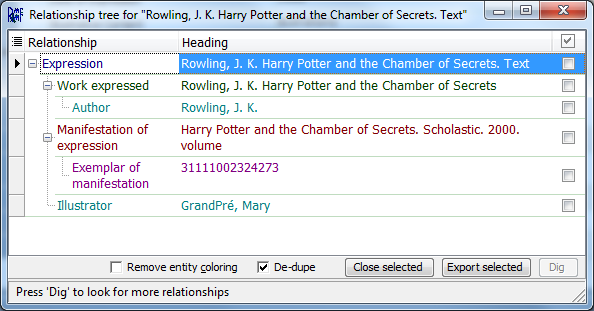After reading about the Jane-athon that is happening at ALA Midwinter in a few months, I decided that I’d like to play around with RDA cataloging outside of the strictures of MARC. I had a quiet afternoon at my library a few weeks ago, so I figured it was a good time to download the RIMMF tool and try it out. RIMMF, or RDA In Many Metadata Formats, was created by Deborah and Richard Fritz to use as a training tool for RDA cataloging. They did a huge service to the library community by creating and releasing it for people like me to play with it. RIMMF is pretty simple and bare-bones, but I was really excited to use a tool that was designed specifically for RDA.
Downloading and getting started with RIMMF was very easy. Actually using it to create records isn’t the most intuitive thing in the world, though – I had some trouble figuring out how to add new element fields and remembering to click in the fields that autofill to actually get the system to provide the information. Thankfully, though, there is a lot of great documentation on the RIMMF website that walks you through using it.

The design of the tool really puts RDA cataloging rules and the WEMI model at the forefront, which made using it very interesting and enlightening. The process of describing a resource involves creating separate records for each of the WEMI entities. I quickly realized that my grasp on the different entities wasn’t as firm as I thought it was — Expression in particular still feels hazy to me. Actually seeing the different pieces of information divided up by entity was really useful, not just in remembering which element goes where, but in helping me think about why a certain piece of information is associated with that entity.


After you create records for the Works, Expressions, Manifestations, and Items, RIMMF shows you a relationship tree, demonstrating the hierarchy of the related records in your set. I had some trouble getting this feature to work at first, but somehow it worked itself out, and it really is pretty neat. I imagine when you have a lot of records linked together (like the Jane-athon’s goal), it will really show the power of those relationships.

Each element is named using RDA terminology, and links are provided to the relevant rules in the RDA Toolkit (way to go, hyperlinked Toolkit!). Entering the data this way is great, and really made me realize how much of my knowledge of RDA is filtered through MARC. I’m not an expert cataloger, but I consider myself fairly proficient with at least the basic RDA rules and elements. But since so many of the rules get bent out of shape when they get squeezed into MARC, I never really learned the actual rules – just how to encode the correct data in MARC records. Working in RIMMF, for example, I realized I don’t fully understand the difference between the title of a work and the title of a manifestation. And I could never have told you how to create an access point for an expression. It just goes to show how valuable a tool like RIMMF is, for helping us think about RDA on its own terms, rather than in the terms that MARC dictates.
Of course, in doing so, I also got a little bit more intimately familiar with some of the quirks and challenges of RDA. But I think that’s a positive thing too: RDA isn’t perfect, and still needs refinement and clarification. I try to follow some of the JSC’s decisions about changes and updates, but it can be a challenge to keep track of the different rules in the abstract. Becoming even a little bit more familiar with the standard on its own merits will hopefully help allow more of us to engage in those conversations.
For me, the best part about spending a few hours playing with RIMMF was getting to think about bibliographic metadata with no reference whatsoever to MARC. I’m a big believer that MARC is holding us back in so many ways, but I’ve always had a hard time breaking its hold on my thinking, at least for bibliographic description. I think some of that at least is because I learned cataloging by learning MARC. Which is exactly why tools like RIMMF are so valuable. I hope to keep experimenting with it, trying different kinds of material and building up more examples to visualize the links between them. I’d also love to participate in something like the Jane-athon to learn together with other people, and I hope there are more similar events (sadly, I’m not going to be a Midwinter). In the meantime, I’m more excited than ever about the future of bibliographic metadata, whatever it might look like.